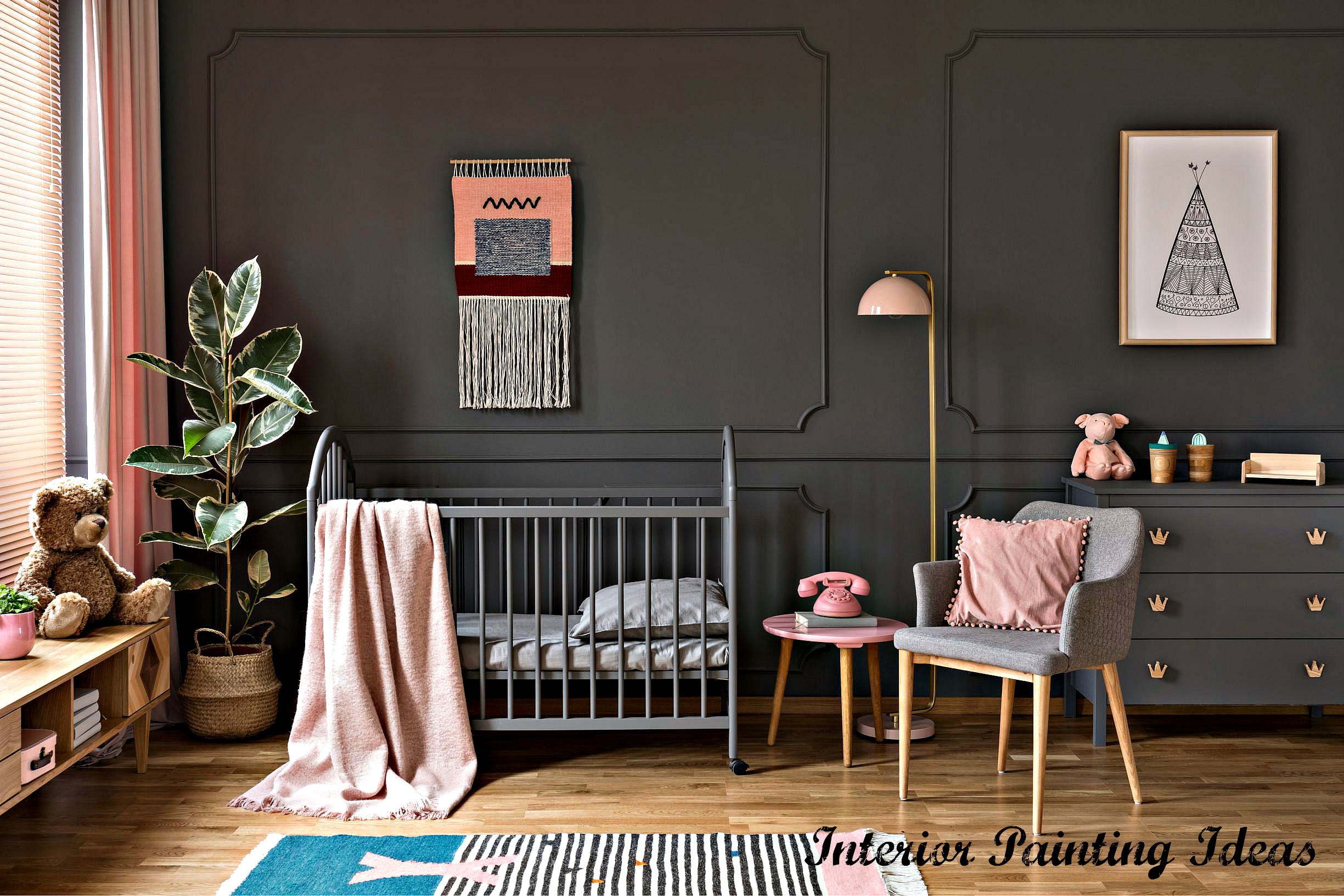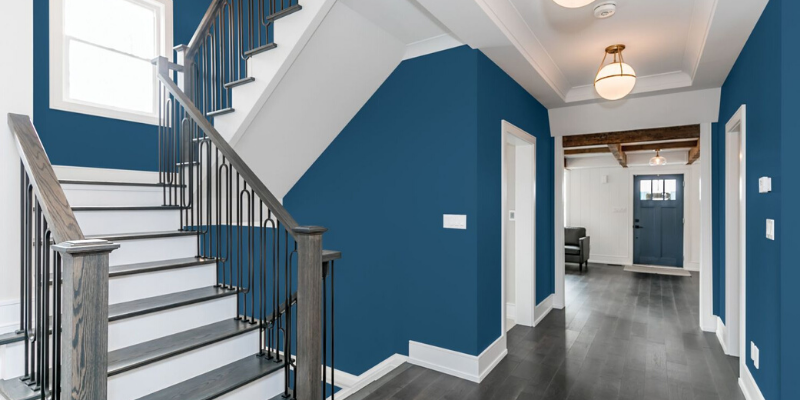Get Professional Lakewood Interior Painting for a Seamless, Beautiful Finish
Wiki Article
Enhance Your Interior Decoration With Comprehensive Color Appointment
The integration of shade assessment right into indoor layout provides a special possibility to refine and boost the emotional and aesthetic vibration of a room. By involving with an experienced shade expert, you can browse the complexities of shade choice, guaranteeing that your selections not only enhance architectural attributes however also reverberate with personal design and psychological effect. This tactical collaboration can substantially influence the overall ambience of your environment, cultivating a sense of consistency and objective. Nevertheless, understanding the nuances of this procedure is necessary-- what essential facets should be considered to accomplish optimal outcomes?Benefits of Shade Appointment

In addition, color appointment aids in maximizing all-natural light and maximizing spatial assumption. Lighter shades can make an area appear even more extensive, while darker shades create an intimate setting. Cleveland Metro Painting Specialists. This tactical application of color can significantly influence the overall ambiance of any interior space
Additionally, professional consultants possess an extensive understanding of present patterns and ageless classics, guaranteeing that the chosen colors will certainly continue to be enticing in time. This foresight can save clients from costly redesigns in the future. Shade examination empowers customers by supplying them with a clear vision and direction, cultivating self-confidence in their design choices and inevitably leading to a much more satisfying and effective indoor design end result.
Comprehending Color Psychology
The value of shade psychology in indoor layout can not be overstated, as it explores the psychological and emotional effects that various tones can evoke in people. Colors can affect mood, habits, and also efficiency, making them a critical factor to consider in any style task.As an example, cozy colors such as red, orange, and yellow are often related to energy and warmth. They can boost sensations of enjoyment and convenience, making them suitable for social areas like living areas or kitchen areas. Conversely, trendy colors like blue, eco-friendly, and purple tend to stimulate calmness and peace, making them optimal for rooms or meditation locations.
Furthermore, using neutral tones can produce a well balanced atmosphere by permitting the bolder colors to stand apart without overwhelming the detects. Recognizing these psychological impacts allows designers to produce areas that not just look cosmetically pleasing yet additionally advertise psychological well-being.
Integrating color psychology into indoor layout involves a thoughtful option of tones tailored to the designated function of each space, ultimately enhancing the overall experience for its occupants. This awareness is important for accomplishing a useful and unified indoor atmosphere.
The Color Wheel Discussed
Understanding the relationships between hues is essential for effective interior design, and the shade wheel functions as a useful device in this process. The color wheel, developed by Isaac Newton in the 17th century, illustrates see post the range of shades prepared in a round style. It makes up main colors-- red, blue, and yellow-- that can not be produced by mixing various other shades. Additional shades, developed by integrating primary colors, include green, orange, and purple. Tertiary colors result from mixing a key and a second shade, causing colors such as red-orange and green.The shade wheel helps developers realize the partnerships in between shades, consisting of corresponding, comparable, and triadic plans. Complementary colors, located contrary each other on the wheel, create dynamic contrasts that can stimulate a room.
Making use of the shade wheel in indoor design not only enhances aesthetic charm yet also evokes certain emotions and environments, making it an important referral for shade assessment. Recognizing these relationships eventually encourages designers to produce areas that are both useful and aesthetically exciting.
Picking the Right Combination
A well-chosen shade plan can merge an area, enhance its functions, and stimulate wanted emotions. Various areas offer different features and need schemes that show their desired use; for circumstances, relaxing colors such as soft blues or environment-friendlies work well in rooms, promoting leisure.Light can substantially change just how shades appear, so it is necessary to examine the area at different learn this here now times of the day. An unified combination should enhance these features, producing a cohesive appearance throughout the area.
When picking colors, use the 60-30-10 regulation, which suggests that 60% of the room ought to be a leading shade, 30% a secondary shade, and 10% an accent shade. This proportion makes sure balance and aesthetic rate of interest (Cleveland Metro Painting Specialists). Ultimately, sample colors on the wall surfaces before dedicating, as this allows you to see how the shades engage with each other and the total setting they develop in your interior decoration project.
Functioning With a Shade Consultant

When collaborating with a color specialist, the process commonly starts with an initial examination. Throughout this conference, you'll review your vision, choices, and the existing components in your room. The consultant will assess your needs and may suggest details shade schemes that straighten with your objectives.
After developing an instructions, the expert will certainly offer examples and aesthetic aids to assist you picture the recommended color design. This action is crucial, as shades can appear in a different way under differing illumination conditions.
Furthermore, a color consultant can direct you in choosing corresponding home furnishings, art work, and accessories to harmonize with your selected palette. By collaborating very closely, you can attain a polished visual that elevates your insides and creates a welcoming environment. Ultimately, the know-how of Get More Information a color professional can dramatically improve the total effect of your layout job.
Conclusion
In recap, extensive shade appointment serves as an essential tool for boosting interior decoration. By leveraging expert expertise of shade psychology and spatial characteristics, a tailored shade palette can be created to stimulate particular feelings and create a harmonious setting. This tactical technique not just fosters a natural layout narrative however additionally reduces the threat of costly redesigns. Inevitably, engaging with a shade specialist ensures an educated and cosmetically pleasing end result, boosting the total experience of the area.By involving with a seasoned color consultant, you can browse the complexities of shade choice, making sure that your selections not just complement architectural attributes yet likewise reverberate with personal style and mental influence. It consists of key colors-- red, blue, and yellow-- that can not be created by mixing various other shades.The color wheel aids designers understand the partnerships in between shades, consisting of complementary, similar, and triadic schemes.When choosing shades, make use of the 60-30-10 regulation, which suggests that 60% of the space should be a dominant color, 30% a secondary shade, and 10% an accent shade. By leveraging specialist understanding of color psychology and spatial dynamics, a tailored shade scheme can be established to evoke certain emotions and create an unified environment.
Report this wiki page